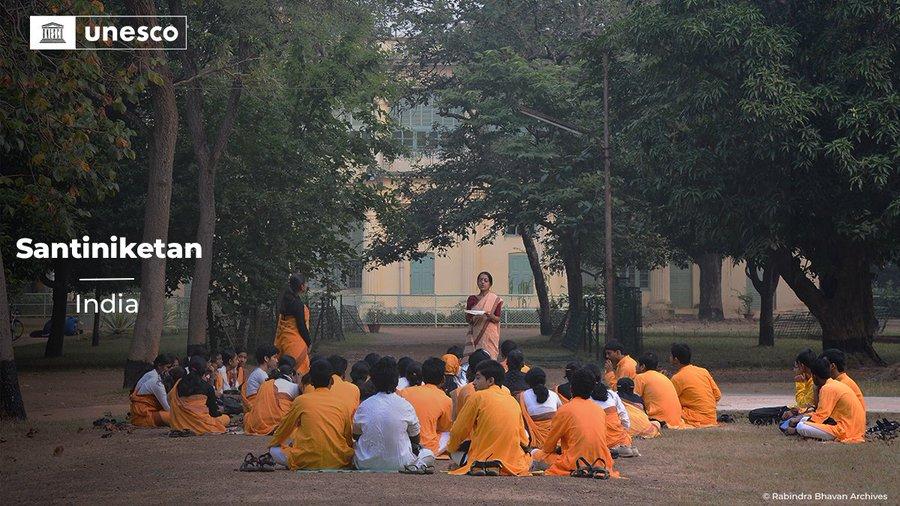Introduction
Santiniketan, the cultural and educational hub founded by Nobel laureate Rabindranath Tagore, has earned a coveted spot on UNESCO’s World Heritage List. This recognition marks a significant milestone for India and celebrates the enduring legacy of this unique institution located in Bengal’s Birbhum district.
India has long been striving to secure a UNESCO designation for Santiniketan, acknowledging its cultural and historical significance. The decision to include Santiniketan in the prestigious list was made during the 45th session of the World Heritage Committee, held in Saudi Arabia, reaffirming its importance on the global stage.
Check complete list of India’s UNESCO World Heritage List
The UNESCO Recognition
A Glorious Achievement
Santiniketan’s inclusion in the UNESCO World Heritage List is a testament to its cultural and educational significance. This recognition reaffirms the importance of preserving and promoting the legacy of Rabindranath Tagore and the institution he built.
India’s Standing on the World Heritage List
With this latest addition, India now ranks sixth on the World Heritage List, further highlighting the nation’s commitment to safeguarding its cultural and natural treasures. The inclusion of Santiniketan reinforces India’s status as a custodian of world heritage. Santiniketan now stands as India’s 41st World Heritage site, solidifying its place in the nation’s rich cultural heritage.
The Journey to UNESCO Recognition
ICOMOS Recommendation
Santiniketan’s path to UNESCO recognition was paved by a recommendation from the International Council on Monuments and Sites (ICOMOS), an international advisory body based in France. Comprising professionals, experts, representatives from local authorities, companies, and heritage organizations, ICOMOS is dedicated to the preservation and enhancement of architectural and landscape heritage worldwide. Their endorsement played a pivotal role in Santiniketan’s journey to the World Heritage List.
The Legacy of Santiniketan
A Spiritual Haven
Santiniketan, originally an ashram established by Rabindranath Tagore’s served as a spiritual retreat. It welcomed individuals, irrespective of their caste and creed, to meditate before the one Supreme God. This inclusive ethos laid the foundation for what would become a cultural and educational powerhouse.
Visva-Bharati University
A Center of Excellence
Santiniketan is home to Visva-Bharati University, one of India’s most prestigious institutions. The university offers degree programs in a wide range of disciplines, including humanities, social sciences, sciences, fine arts, music, performing arts, education, agricultural science, and rural reconstruction.
Founded by Rabindranath Tagore
Founded by Rabindranath Tagore, Visva-Bharati was later declared a central university and an institution of national importance through an Act of Parliament in 1951. Tagore’s vision of holistic education and cultural exchange continues to shape the institution’s ethos.
The Prime Minister as Chancellor
Visva-Bharati holds a unique status as the sole central university of West Bengal, and the Prime Minister of India serves as its chancellor. This distinction underscores the university’s significance in the nation’s educational landscape.
In conclusion, Santiniketan’s inclusion in UNESCO’s World Heritage List is a momentous achievement for India. It not only celebrates the enduring legacy of Rabindranath Tagore but also recognizes the cultural and educational significance of Santiniketan and Visva-Bharati University. This UNESCO designation ensures that this cultural gem will be preserved and celebrated for generations to come.



 Indian Olympic Medal Winners List Till N...
Indian Olympic Medal Winners List Till N...
 Who is the Inventor of the Gramophone?
Who is the Inventor of the Gramophone?
 HS Dhaliwal Appointed New DGP Of Andaman...
HS Dhaliwal Appointed New DGP Of Andaman...
